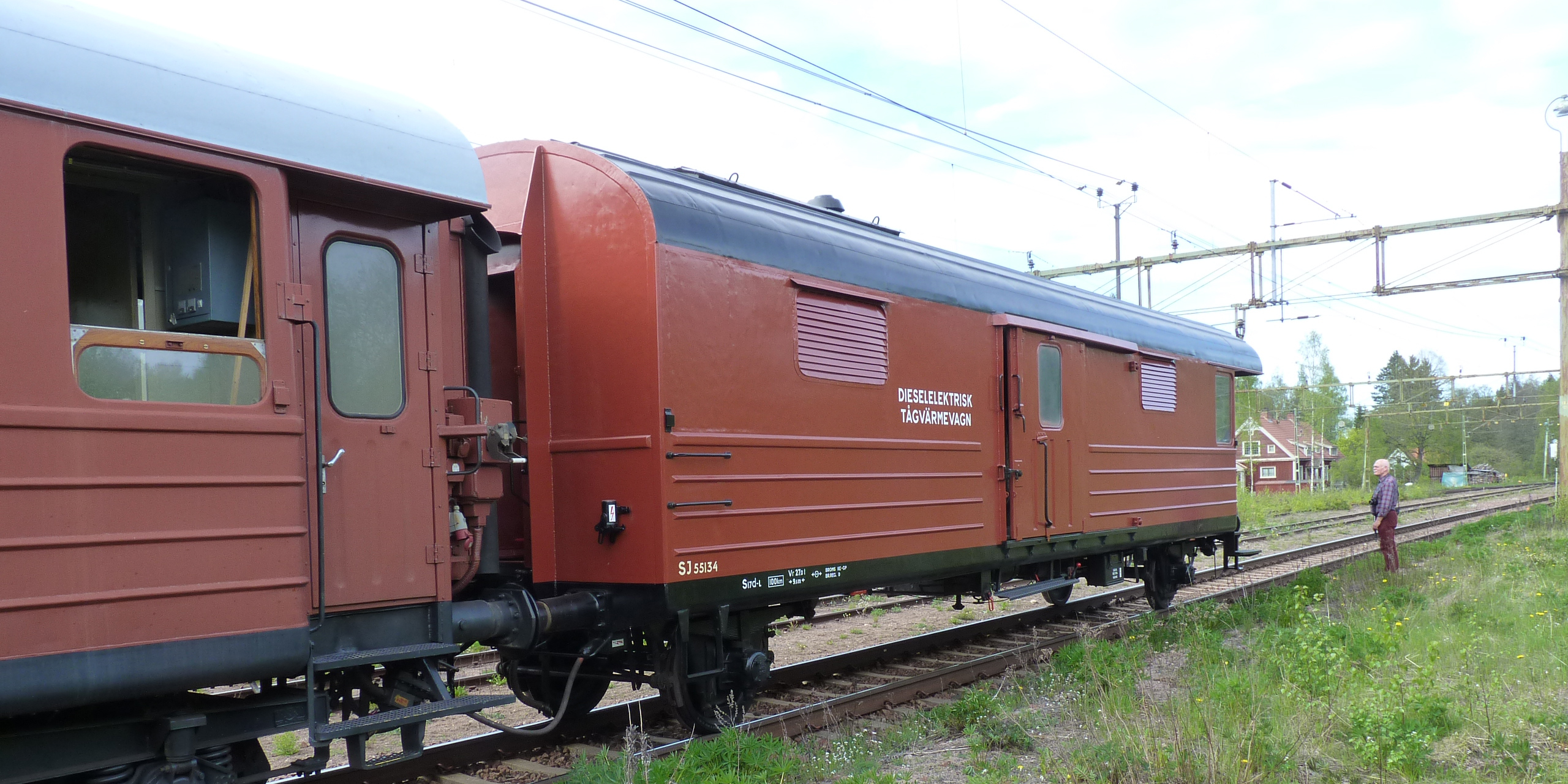
Train heater wagon S17d 55134
In the days of steam locomotives, passenger trains were heated with steam and the light typically came from generators and batteries under the carriages.
When the electric locomotive made its debut, 1000 V 16 2/3 Hz was sent out from the locomotive’s transformer, i.e. a completely separate electrical system that only the railway has.
The carriages were gradually built so that they did not have steam heating, and the generator lighting also disappeared. It was then necessary to solve the electricity issue when pulling trains with diesel locomotives.
First, they tried having an extra engine with a generator in the diesel locomotive, but it was so noisy that the drivers and the unions were not very happy. So, around 1962, the solution was to rebuild some baggage cars with a diesel engine and a generator so that they could supply power to the train. Such wagons were then called “diesel-electric train heater wagons”.
S17d 55134 is such a wagon, and it was completed renovated in 2014 by Friends of Swedish Railway Museum (Järnvägsmusei Vänner). The wagon joins the journey when we travel with a steam locomotive or diesel locomotive and need heating or e.g. power to the restaurant carriage. In other words, it is this wagon that travels at one end and makes a lot of noise.
The wagon also has a small built-in generator that can deliver 400 V, 50 Hz to the train and restaurant carriage. The wagon’s output is rather limited, and is enough for 3–4 carriages when it is really cold out. So, you often see their red and white container wagon on the train of the Inland Line – because that is where the power is!
Explanation
S17d is a type designation (class) of the wagon type and means:
- S = Special wagon
- 17 = Model 17 in the S family, which in 1962-1970 meant heating wagon
- d = The wagon has a diesel-electric heating unit
- 55134 is the wagon's unique identifier number
Manufactured
ASJ Linköping, rebuilt in 1962 to train heater wagon
Length
14.1 metres
Weight
48 tonnes
Engine power
The engine is a GM V8 2-stroke with 240 hp. The model is called series 071 model 7083-7200. The motor operates at 1,800 rpm.
Maximum permitted speed
100 km/h